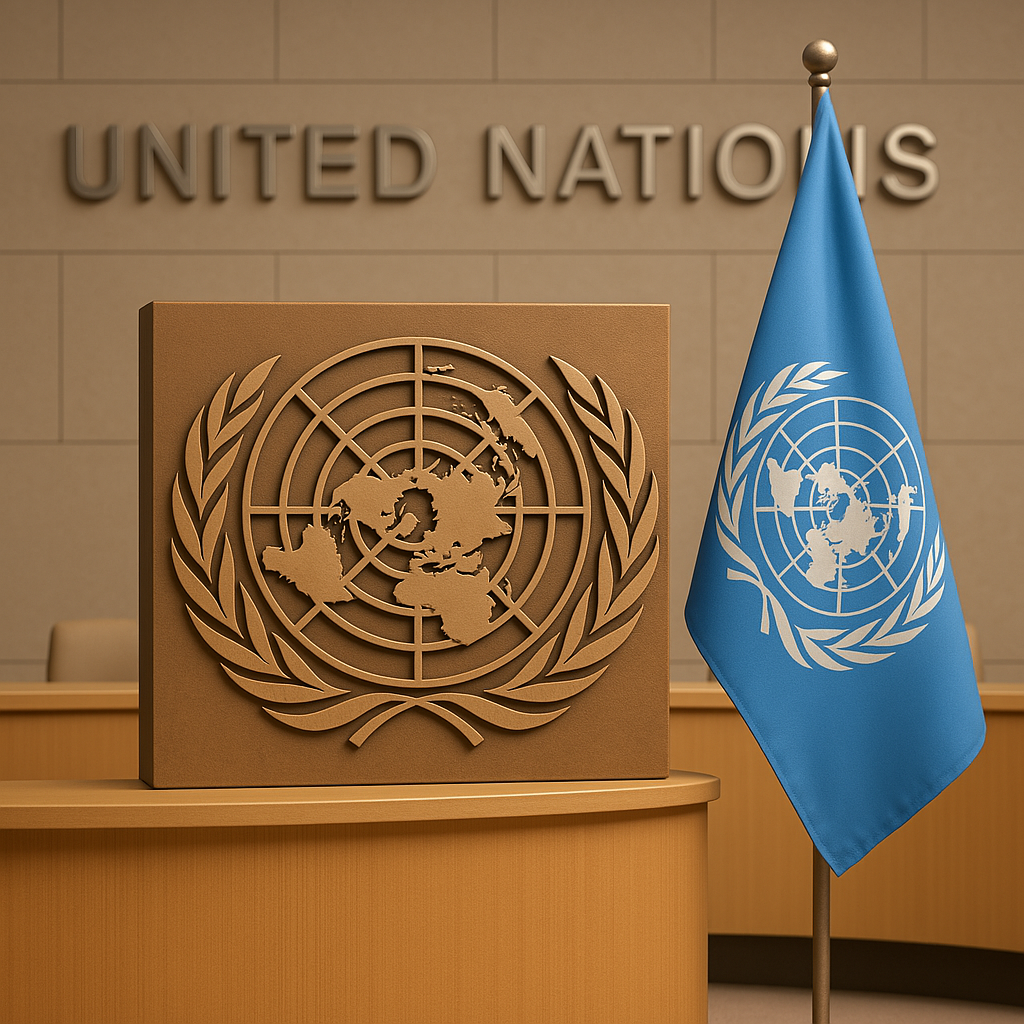
1. Background:
The United Nations Organization (UNO) was founded at the end of World War II. The widespread destruction , human loss and global crises during World War II ( 1939–1945) convinced the world that a global organization was needed to maintain peace and resolve international disputes.
2. The Failed League of Nations of the Eighteenth Century:
The “League of Nations” was established in 1919 after the First World War , but it failed to prevent the Second World War. Due to its failure , the need for a more influential and powerful organization was felt.
3. Establishment of the United Nations:
The United Nations was established on 24 October 1945. Earlier , on 26 June 1945 , 50 countries had signed the United Nations Charter (Constitution) in San Francisco (USA) . When this charter was ratified by enough countries on 24 October 1945 , the United Nations formally came into existence.
4. Objectives :
The main objectives of establishing UNO were as follows:
- Maintaining international peace and security.
- To promote friendly relations among nations.
- economic , social , cultural and human problems.
- Promoting human rights and freedoms.
5. Main organs :
UNO has 6 main organs:
- General Assembly
- Security Council
- Economic and Social Council ( ECOSOC)
- Court of Justice
- Secretariat
- Trusteeship Council ( Trusteeship Council – currently inactive)
6. Headquarters:
The headquarters of the United Nations is located in New York City (United States).
7. Current Members:
The United Nations has 193 member countries by 2025. Almost all independent nations are its members.
8. India and United Nations:
India is a founding member of the United Nations. India has always played an important role in UNO peacekeeping missions , development work and international cooperation.
9. Conclusion:
The United Nations was established with the aim of strengthening the spirit of peace and cooperation in the world. Even today it is playing an important role in global issues such as climate change , poverty , terrorism , human rights , and peace building.
united nations day every year 24 October is celebrated on.
1. United Nations ( UNO) Was Established Background
the United Nations ( UNO) is hidden in the horrors of the Second World War. This war, which lasted from 1939 to 1945 , was the most destructive war in history , in which millions of people died and countless cities and countries were destroyed. During this war it became clear that if a solid and effective international organization is not created to maintain world peace , then even more terrible wars can happen in the future.
League of Nations” was established in 1919 to maintain peace after the First World War ( 1914–1918) . Although its intentions were good , this organization was completely unsuccessful in preventing the Second World War. Learning from its experiences, the world powers planned to create a new and more effective organization.
It was during the Second World War that in 1941 , US President Franklin D. Roosevelt and British Prime Minister Winston Churchill issued the “Atlantic Charter” , which envisioned an organization that could ensure global peace and security. Subsequently, concrete steps were taken towards the formation of the United Nations through the “Dumbarton Oaks Conference” in 1944 and the “San Francisco Conference” in 1945 .
Finally , on 24 October 1945 , when enough countries ratified the United Nations Charter , the organization formally came into existence. Thus , the establishment of the UNO was the result of a collective effort to save the world from war and destruction.
2. The failed League of Nations of the Eighteenth Century
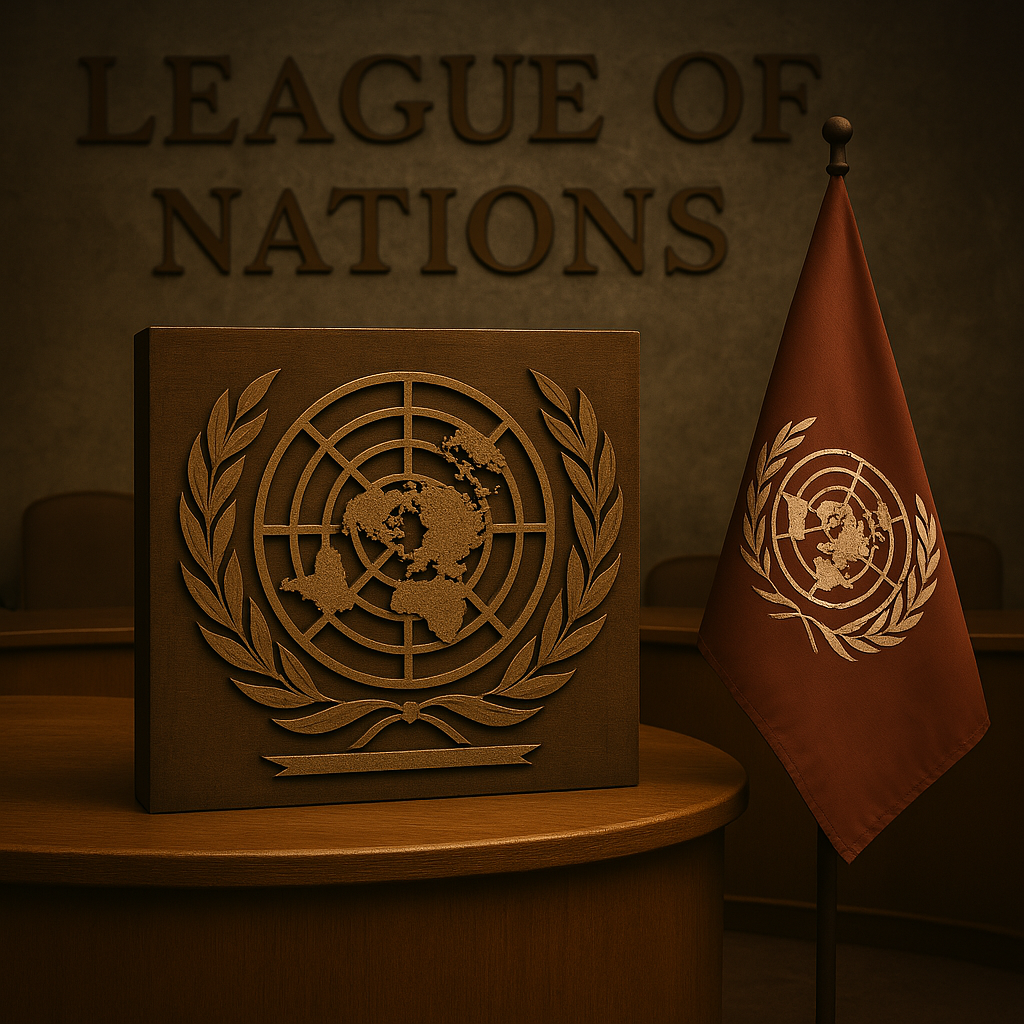
( Correct history reference: League of Nations not the Eighteenth but Twentieth Century It was established in.)
League of Nations was established on 10 January 1920 after the First World War ( 1914–1918) . Its purpose was to maintain international peace and prevent future wars. This organization came into existence under the Treaty of Versailles due to the efforts of US President Woodrow Wilson.
Though it was founded with a noble aim of peace , it failed due to several reasons:
1. Lack of powers:
The League had no standing army and was unable to enforce its decisions. It depended only on the cooperation of member countries.
2. America not being a member:
Despite being a founder, America never became a member of the League of Nations. This weakened the League’s global legitimacy and power.
3. Failure to take decisive action :
When Japan ( Manchuria in 1931 ) , Italy ( Ethiopia in 1935 ) and Germany ( military expansion in the 1930s ) adopted aggressive policies , the League failed to stop them.
4. Conflict of interests of nations:
Member countries often placed their national interests above the collective interests of the League , which led to unity.
5. Start of Second World War:
The biggest failure of the League of Nations is that it could not prevent the Second World War in 1939. This shows its complete failure.
Conclusion:
The failure of the League of Nations made it clear that the world needed a more powerful , organized and effective international organization that would be able to maintain peace. Learning from this experience, the United Nations ( UNO) was established in 1945 .
3. Establishment of The United Nations
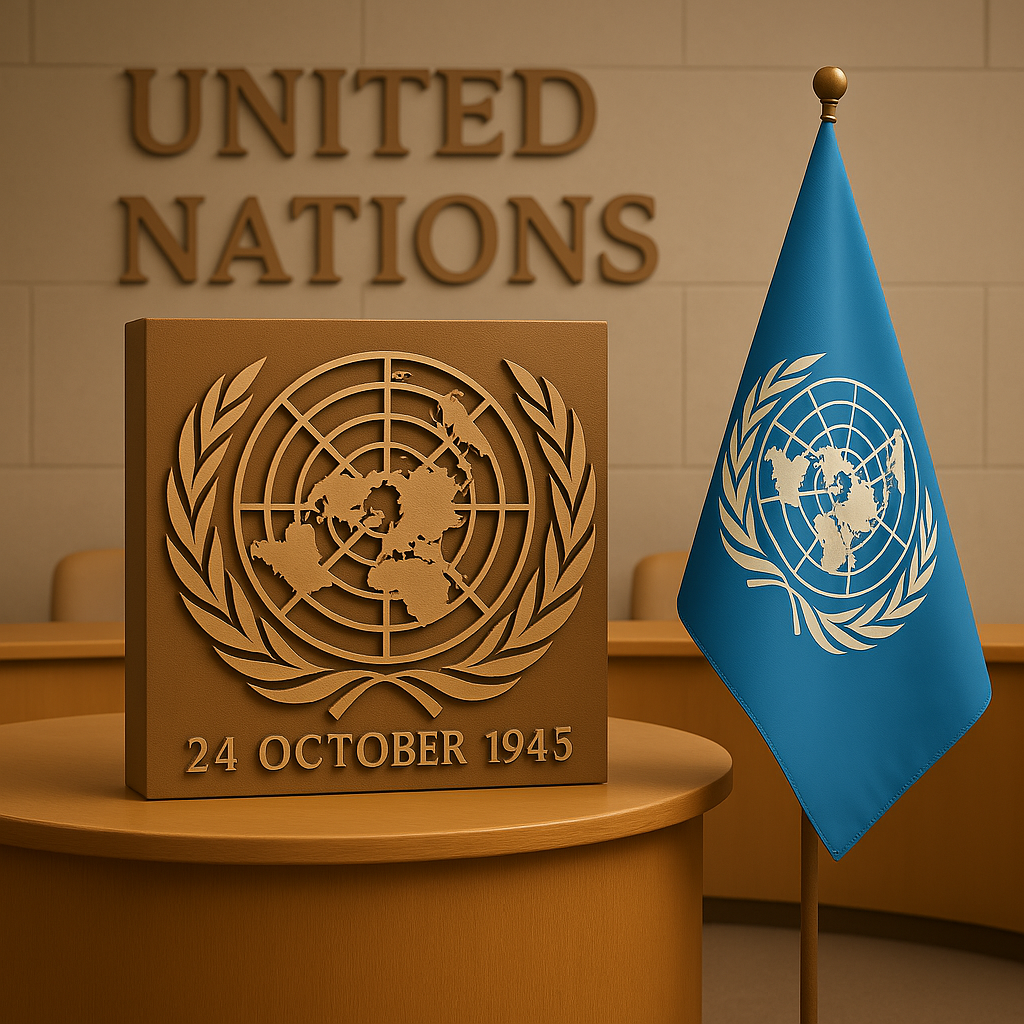
The United Nations was established on 24 October 1945 , soon after the end of the Second World War. Its main objective was to promote peace , security and cooperation in the world , so that global wars and conflicts could be prevented in the future.
The installation process happened like this:
( i ) Atlantic Charter – 1941:
US President Franklin D. Roosevelt and British Prime Minister Winston Churchill signed the Atlantic Charter in August 1941. It envisioned an organisation that would promote cooperation and peace among all nations.
(ii) Declaration of the United Nations – 1942:
On 1 January 1942, 26 countries signed this declaration , in which they pledged to fight unitedly against Nazi Germany and the Axis powers and to cooperate in the establishment of an international organization.
(iii) Dumbarton Oaks Conference – 1944:
, Britain , China and the Soviet Union met in Dumbarton Oaks, Washington, D.C., to draft the structure , objectives and functioning of the United Nations.
(iv) San Francisco Conference – 1945:
25 April to 26 June 1945 , representatives of 50 countries met in San Francisco, America to discuss the United Nations Charter (Constitution) and signed it on 26 June 1945 .
(v) Formal establishment – 24 October 1945:
The United Nations was formally established on 24 October 1945 , when the Charter was ratified by 51 countries , including the principal powers required for ratification (notably the five permanent Security Council members – the United States , Russia , Britain , France and China) .
This day is celebrated every year as ‘United Nations Day’.
Initial members:
At the time of its establishment, the United Nations had 51 member countries. India was also one of the major founding members.
In short:
The United Nations was founded after the worst tragedy in human history – the Second World War – with the main objective of protecting future generations from the horrors of war. The organization is still actively working for world peace and development.
4. Objectives of The United Nations
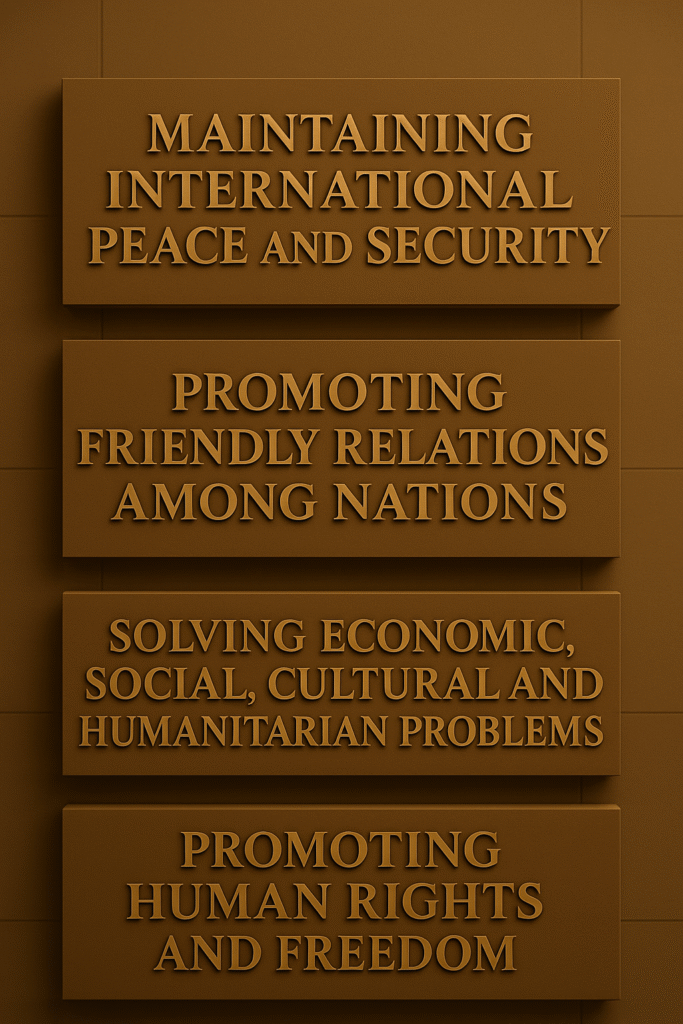
The main purpose of establishing the United Nations was to ensure lasting peace , security and cooperation in the world. Its charter clearly defines its objectives. These objectives are as follows:
( i ) Maintenance of international peace and security:
The main objective of the United Nations is to prevent conflict between member countries , avoid war and maintain peace at the global level. For this, it adopts measures like mediation , negotiations , peacekeeping forces and economic sanctions.
(ii) To promote friendly relations between countries:
inspires all countries to establish friendly relations on the basis of sovereignty , equality and mutual respect , so that there is no discrimination on the basis of race , caste , religion and language.
(iii) To solve economic , social , cultural and humanitarian problems:
The United Nations helps solve global problems such as poverty , hunger , disease , illiteracy , gender inequality, and environmental crisis. It works through agencies such as the World Health Organization ( WHO), UNESCO , UNICEF , and UNDP .
(iv) Promotion and protection of human rights and fundamental freedoms:
UNO works to protect human rights around the world. It helps people ensure rights such as liberty , equality , freedom of expression and religious freedom.
(v) Promoting international cooperation:
The United Nations provides a common platform for cooperation and coordination among different countries so that global issues can be solved together.
(vi) Dissemination of justice and respect for international laws:
UNO is that international laws should be followed in the world and all countries should resolve disputes through peaceful means.
Conclusion:
These objectives of the United Nations not only lay the foundation for lasting peace and development in the world but also create a global environment in which all countries and individuals can live with dignity , security and equality.
5.Principal Organs of the United Nations
Principal Organs of the United Nations
For the United Nations to function effectively, it 6 Main Organs have been determined. All these organs together fulfill the objectives of UNO . Their functions , rights and structure are clearly determined in the United Nations Charter.
( i ) General Assembly :
- It is the main discussion forum of the United Nations.
- All member countries have equal representation in it – every country a vote is received.
- This organ passes the budget , admits new member countries , and discusses global issues.
- Its session is held every year september It is headquartered in New York City.
(ii) Security Council :
- It is the most powerful organ of the United Nations , whose work is maintaining international peace and security Is.
- In this 15 members They consist of:
- 5 Permanent Members : The United States , Russia , China , France , and the United Kingdom – who have veto power.
- 10 temporary members- elected for 2 years.
- This organ has the power to send peacekeepers , impose sanctions or authorize military action.
(iii) Economic and Social Council ( ECOSOC):
- This organ coordinates activities related to global economic , social , cultural , health , education and human rights.
- Under this, specialized agencies like WHO, UNESCO, UNICEF, UNDP etc. work.
- In this 54 member countries , who are elected by the General Assembly for a term of 3 years.
(iv) International Court of Justice (ICJ):
- this organ The Hague (Netherlands) It is located in.
- Its function is to provide equitable settlement to international disputes.
- In this 15 Judges They are elected jointly by the General Assembly and the Security Council for a term of nine years.
- Only nations can bring cases to this court , not individuals.
(v) Secretariat :
- It is the administrative body of the UNO which coordinates the functioning of all its organs.
- leading off United Nations Secretary -General We do.
- The Secretary General serves a term of five years and is appointed by the General Assembly.
- Current ( until 2025 ) Secretary General: Antonio Guterres Guterres ) .
(vi) Trusteeship Council :
- Its aim was to transform the colonies into independent and self-governing nations.
- Since all Trust Territories have become independent , this Council Currently inactive Is.
- Its last session was held in 1994 .
Conclusion:
These six organs of the United Nations work together to ensure global peace , justice , development and cooperation. Each organ has its own special role , which makes UNO an influential and active organization.
(i)United Nations General Assembly
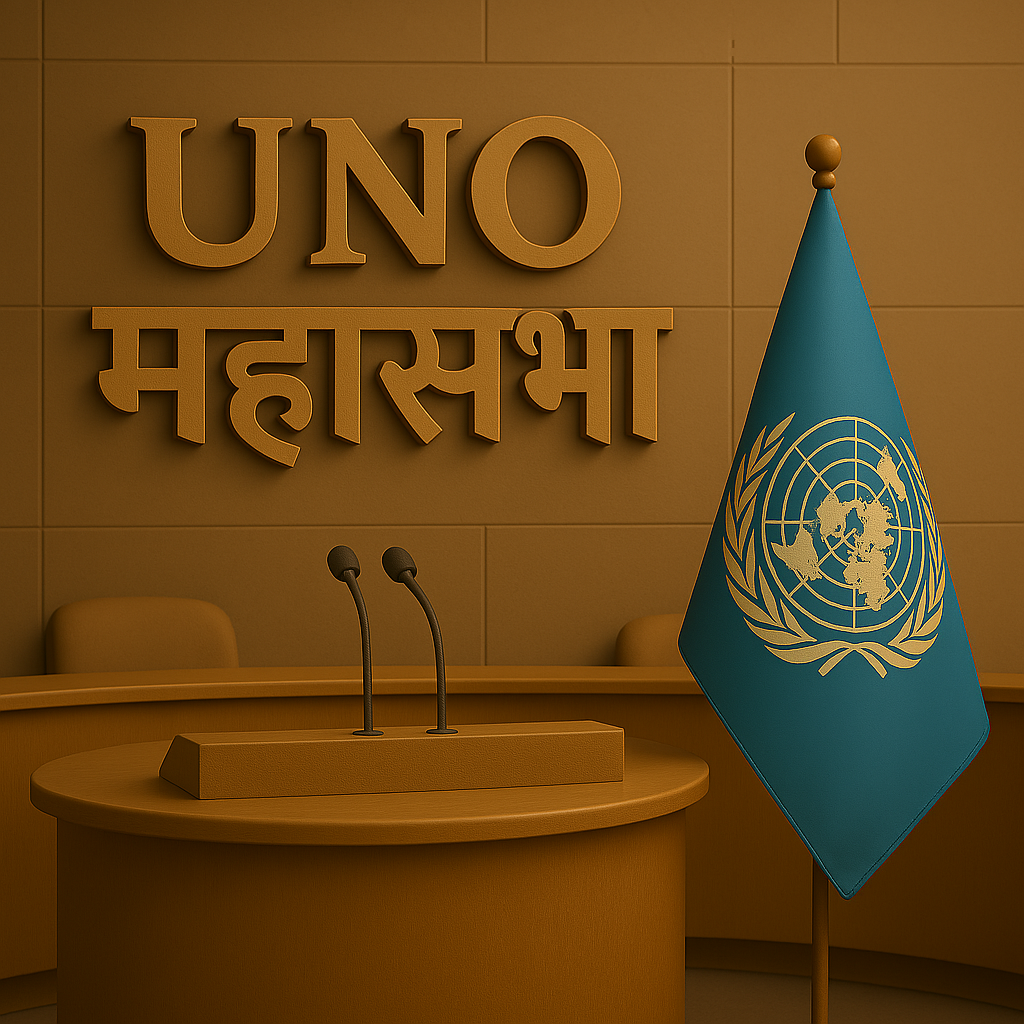
The United Nations General Assembly is the principal and most representative organ of the United Nations. It is called the executive body of the United Nations. Democratic Parliament It is also called as all the member countries have equal rights in it.
Key Features:
1. Subscription:
- of the United Nations at the General Assembly All member countries are included.
- to each member country One vote has the right to every citizen , irrespective of its size , population or economic status.
2. Sessions :
- Regular annual meeting of the General Assembly September every year It is held at the United Nations Headquarters in New York.
- in addition, if required special session can also be called.
3. President :
- President of the General Assembly every year is selected.
- The President controls the proceedings of the session and gives representatives of countries the opportunity to speak.
The main functions of the General Assembly:
( i ) Discussion and recommendations:
- discussing issues such as international peace and security , development , human rights , environment and refugees, and Recommendations Give.
(ii) Approval of the Budget:
- of the United Nations annual budget to pass the and for member countries Financial contributions set.
(iii) Acceptance of Membership:
- membership of new member countries Acceptance or rejection Give.
(iv) Election of non-permanent members of the Security Council:
- to the Security Council , the Economic and Social Council , and other bodies Selection of temporary members to do.
(v) Participation in the appointment of the Secretary General:
- on the recommendation of the Security Council approval of appointment Give.
No judicial power:
The decisions of the General Assembly are generally Recommendation ( non-binding recommendation) They are not legally binding , but they are Diplomatic and moral significance It happens a lot.
Conclusion:
The United Nations General Assembly is a global platform where all nations come together to discuss important issues related to humanity. Group discussion , collaboration and solutions It is the main platform to strengthen the spirit of global democracy.
(ii) Security Council of the United Nations
Security Council of the United Nations
of the United Nations The Security Council is considered to be the most powerful and influential organ. Its main function maintaining international peace and security When there is a situation of war , conflict or violence in a country , the Security Council intervenes.
Key Features:
1. Subscription:
total in the security council 15 members They consist of:
- 5 Permanent Members :
- America ( USA)
- Russia
- China
- France
- United Kingdom ( UK)
These five countries Veto Power This means that if a permanent member vetoes a proposal , then that proposal cannot be passed.
- 10 Non- Permanent Members :
- By the General Assembly 2 years are elected to.
- Their selection Regional representation It is based on the .
- India has also been a temporary member several times.
Main functions:
( i ) Maintaining international peace:
- in a state of war or conflict in any country Treaty , arbitration , and ceasefire To suggest.
- in case of breach of the peace Peacekeeping Forces of UNO Send.
(ii) Sanctions and Military Action:
- When needed Economic sanctions , arms embargo or military intervention to allow for.
(iii) Appointment of Secretary General:
- The General Assembly has been advised to send the name of the Secretary General Recommendation to do.
(iv) Selection of Judges of the Court:
- To participate, together with the General Assembly, in the appointment of judges of the International Court of Justice ( ICJ) .
Effect of Veto Power:
- In case any permanent member country says “no”, the proposal rejected This happens even if all other members are in his favour.
- For this reason, many times even proposals in world interest are not passed.
India and the Security Council:
- India is a founding member of the United Nations.
- India has been a temporary member of the Security Council several times.
- India has long been Permanent Membership is demanding and its support is also increasing on global forums.
Conclusion:
The Security Council is the forum of the United Nations that resolves conflicts in situations of war and crisis in the world Instant Decision taking Peace and stability It tries to maintain its structure. Its structure is strong , but powers like veto sometimes influence its decisions.
(iii) Economic and Social Council
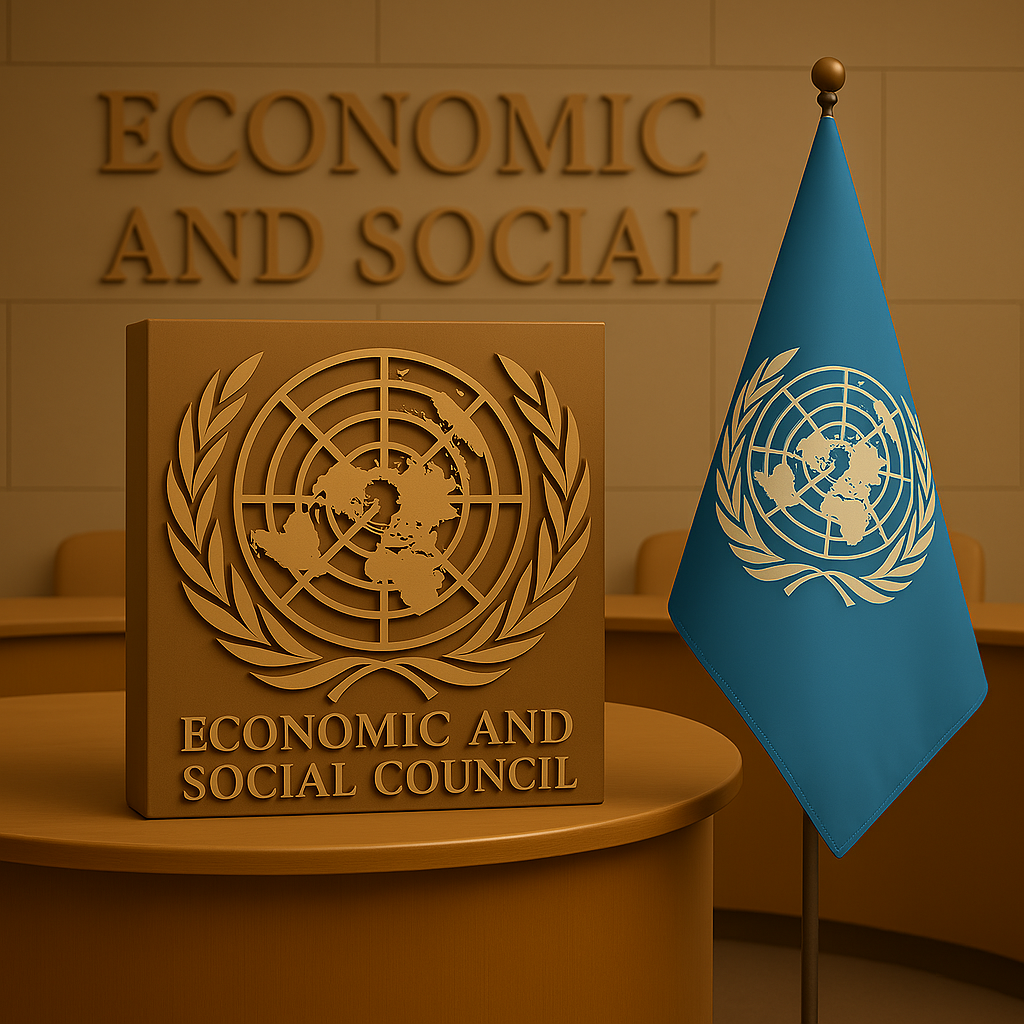
The Economic and Social Council (ECOSOC) is a major organ of the United Nations , whose work is to regulate global Economic , social , cultural , health and human rights The purpose of this council is to consider matters related to the world and promote cooperation among countries. This council is the most important body in the world Development , sustainability and human well-being She works for the .
Key Features:
1. Subscription:
- The total in this 54 member countries There are.
- to member countries General Assembly By 3 years is elected for a period of.
- Selecting a Membership Geographic representation This is done keeping in mind the needs of the country (e.g. representatives from Asia , Africa , Europe, etc.).
2. Meetings and sessions:
- of ECOSOC Annual Convention It usually happens in the month of July.
- in addition, specific topics Special Session can also be called.
Main functions:
( i ) Promoting economic and social development:
- Working on poverty , unemployment , economic inequality and problems of developing countries.
(ii) Promotion of Human Rights and Education:
- To run programmes for protection of the rights of women , children , minorities and backward classes.
- Promoting global literacy and higher education.
(iii) Coordination of Specialised Agencies of the United Nations:
ECOSOC is the UN’s Specialized Agencies , such as:
- UNESCO ( Education , Science and Culture)
- WHO ( World Health Organization)
- UNICEF ( Children’s Fund)
- ILO ( International Labour Organisation)
- UNDP ( United Nations Development Program)
(iv) Organising International Conferences and Preparation of Reports:
- Organising international conferences and publishing reports on topics like Sustainable Development , Climate Change , Gender Equality etc.
India and ECOSOC:
- India has been an active member of ECOSOC .
- India has supported several proposals in the fields of social justice , aid to developing countries and health services.
Conclusion:
Economic and Social Council , of the United Nations Development and human welfare It is the center of policies and programs related to the World Health Organization. This council is the center of policies and programs related to the World Health Organization equality , education , health , and economic growth Works to ensure and strengthen global cooperation.
(iv) Judicial Council
judicial council To It is also called the International Court of Justice (ICJ) . It is a court of the United Nations. Main judicial organs , whose function is Resolving international disputes And Interpreting international laws Its purpose is to strengthen justice and the rule of law at the global level.
Key Features:
1. Location:
- Headquarters of the Court Located in The Hague , Netherlands (Holland).
- It is the only organ of the United Nations headquartered outside New York.
2. Installation:
- It was established in 1945 along with the United Nations and has been operational since 1946 .
3. Structure:
- total in court 15 Judges There are.
- These United Nations General Assembly and Security Council By 9 Years is selected for.
- All judges are from different countries and two judges cannot be from the same country.
4. Chairman and Vice Chairman:
- The court from among itself a president And a vice Selects the .
Main functions:
( i ) Settlement of international disputes:
- Courts between countries border disputes , interpretation of treaties , diplomatic relations , human rights decides on matters such as.
- Only Country (Nation) can bring cases in this Court , any individual or private entity No.
(ii) Advisory Opinion :
- the General Assembly , the Security Council or any other organ of the Legal Advice You can take it.
- These opinions are not binding , but they Important ethical implications It happens.
Validity of decisions:
- Court decisions Binding There are rules , but they apply only to countries that join the process.
- The court cannot implement the decision on its own , if a country does not accept the decision then the case Security Council goes to.
India and the ICJ:
- India has presented cases to the ICJ several times , such as:
- India-Pakistan Kulbhushan Jadhav case ( 2017)
- India-Portugal Dadra and Nagar Haveli dispute ( 1960)
- Judges of India Nagendra Singh And Dalveer Bhandari has been a Judge in this Court.
Conclusion:
The Judicial Council plays a vital role in establishing world peace , justice and law based order. Important pillars It is an international platform for impartial decision-making between countries. resolve conflicts peacefully Helps in , thereby fulfilling the objectives of the United Nations.
(v) Secretariat of The United Nations
Secretariat of the United Nations
of the united nations The Secretariat Administrative organs which is the basis for all the programmes and policies of the organisation Daily Operations It is responsible for the various organs of the United Nations. Technical , administrative and research support Provides.
Key Features:
1. Key Person – Secretary -General:
- chief officer of the secretariat United Nations Secretary General It happens.
- Secretary General of the United Nations Key spokespeople and representatives It happens.
- Tenure of Secretary General 5 Years and is appointed by the General Assembly on the recommendation of the Security Council .
- Current ( until 2025 ) Secretary General: Antonio Guterres Guterres ), from Portugal.
Headquarters:
- Headquarters of the Secretariat New York City (USA) It is located in.
- Apart from this, there are regional offices in Geneva , Vienna , Nairobi etc.
Main functions:
( i ) Administrative functions:
- Organizing United Nations meetings , preparing reports , translating and publishing documents.
- Assisting the General Assembly , Security Council , ECOSOC etc.
(ii) Policy Implementation:
- decisions and policies taken by the General Assembly and the Security Council implement effectively .
- Conducting development programmes and peacekeeping missions.
(iii) Confidential Reporting:
- When the Secretary-General sees a situation of crisis or conflict anywhere in the world, he can inform the Security Council or the General Assembly. Confidential Report Can send.
- this to the Secretary General Political and diplomatic role gives the opportunity to fulfil.
(iv) Focusing on global problems:
- To focus the United Nations on issues like climate change , sustainable development , human rights , pandemics etc. and take steps towards solutions.
Staff and languages:
- The Secretariat comprises approximately 10,000 representatives from different countries. Over 40,000 employees Are working.
- of the United Nations 6 official languages Are:
- English
- French
- Spanish
- Russian
- Arabic
- Sugar
Conclusion:
The Secretariat of the United Nations spinal cord which provides all the necessary information for the smooth functioning of the organisation Administrative , research and implementation related The leadership of the Secretary-General and the impartiality , efficiency and transparency of the Secretariat are the cornerstones of the success of the United Nations.
(vi) Trusteeship Council
Trusteeship Council is a main organ of the United Nations , the purpose of its establishment was Administering and guiding territories that were not independent and self-governing , i.e. territories that were colonies or were being administered by a victorious country.
Establishment and Objectives:
- Establishment of Trusteeship Council Chapter 13 of the United Nations Charter Under 1945 It was done in.
- Its main task was to To develop politically , socially , economically and educationally and become an independent nation To help in.
Work:
- of the trustee areas Progress monitoring to do.
- to see that administrative powers are exercised in these areas Whether she is ruling in public interest or not .
- in these areas Education , law , health and infrastructure To ensure the development of.
- these areas to Independence and self-rule to motivate in the direction of.
Member:
- Its members were those countries which administered trusteeship areas (eg – America , Britain , France).
- Besides, the permanent members of the Security Council were also its members.
Trustee area as an example:
- Several colonies in Africa and the Pacific such as Tonga , Papua New Guinea , and Namibia were trustee territories.
Cessation of work and deactivation:
- Over time all trusteeship territories became independent and sovereign nations.
- The Trusteeship Council’s work ended with the independence of Palau ( an island in the Micronesia region) in 1994 .
- Since then, the Council has Inactive Has occurred.
- However , it still officially remains a part of the United Nations.
Conclusion:
The Trusteeship Council has Independence and self-determination by ending the colonial system It strengthened the principle of ‘A ‘. Its contribution to the world The growth of independent nations and the development of human rights It was important in 1999. Even though this council has become inactive today , its historical importance is considered important in the success of the United Nations.
6. United Nations (UNO)Headquarters
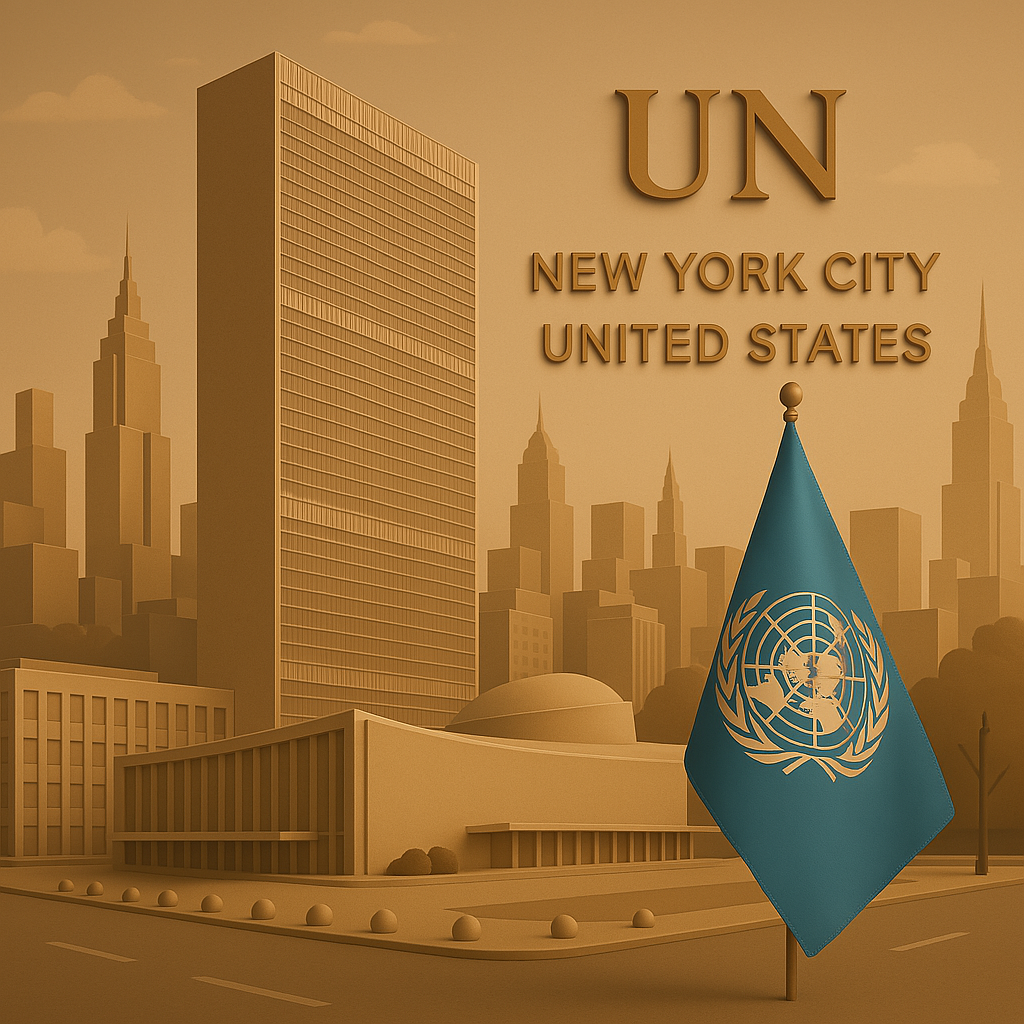
United Nations ( UNO )Headquarters
of the United Nations ( UNO) Headquarters Of America It is located in New York City . This place is a part of the United Nations Key operations and decision centers , from where most of the organization’s global operations are conducted .
Key Features:
1. Selection of location:
- The headquarters of the United Nations was established in New York in 1946 .
- The US provided land for UNO ‘s headquarters , and billionaire philanthropist John D. Rockefeller Jr. spent approximately Rs. 10 lakh for its construction 8.5 million dollars Gave it in charity.
2. Building and Premises:
- The headquarters has several important buildings , such as:
- General Assembly Hall
- Security Council Chamber
- Secretariat Building
- this complex International zone of the United Nations It is considered to be a state law , meaning some of the normal laws of the host country (America) do not apply here.
3. Other Regional Offices:
Some major UN regional offices are also located in other cities:
- Geneva (Switzerland): for issues such as human rights and health
- Vienna, Austria): Work related to atomic energy and narcotics control
- Nairobi, Kenya): for environment and housing programs
Languages:
working at the headquarters 6 official languages Are:
- English
- French
- Spanish
- Russian
- Arabic
- Sugar
Symbol of Tourism and Peace:
- to the United Nations Headquarters It has been opened for tourists , where people can visit.
- There are many symbols depicting world peace , cooperation and protection of human rights. Artefacts and sculptures are also established.
Conclusion:
The United Nations Headquarters is not just a building , it is A symbol of world cooperation , peace , and global policy making This New York-based center is a forum for world leaders and representatives of nations where important decisions are taken for the future of humanity.
7. Current Membership of the United Nations
The United Nations Organisation ( UNO) was established in 1945 51 member countries With time new countries were formed in the world and after independence many nations gained membership of the United Nations.
Total number of UN member countries by 2025 :
👉 193 countries**
Some key points:
( i ) Founding Members :
- initials of the united nations 51 member countries India was also one of them.
- These were the countries that had San Francisco Conference The United Nations Charter was signed in 1917.
(ii) Admission of new member countries:
- New countries are recognized by the United Nations General Assembly , with recommendations on the Security Council Subscription is given on .
- As the colonies became independent , membership grew.
- South Sudan was the United Nations’ representative in 2011 193rd and so far last member country Made.
(iii) Non-member Observer States :
The United Nations also has two non-member observer states :
- Vatican City ( Holy See)
- Palestine :
These countries do not have voting rights , but they can participate in the meetings of the General Assembly Are.
Benefits of UN Membership:
- Recognition and participation on the international stage
- Economic , social and humanitarian aid
- Opportunity for justice and redress in international disputes
- Cooperation with United Nations agencies
- Participation in peacekeeping missions
Conclusion:
The United Nations today representing almost the whole world Its 193 member countries are working together to protect global peace , security , development and human rights. This membership is free for any nation. A symbol of international cooperation and respect It is considered.
8. India and the United Nations
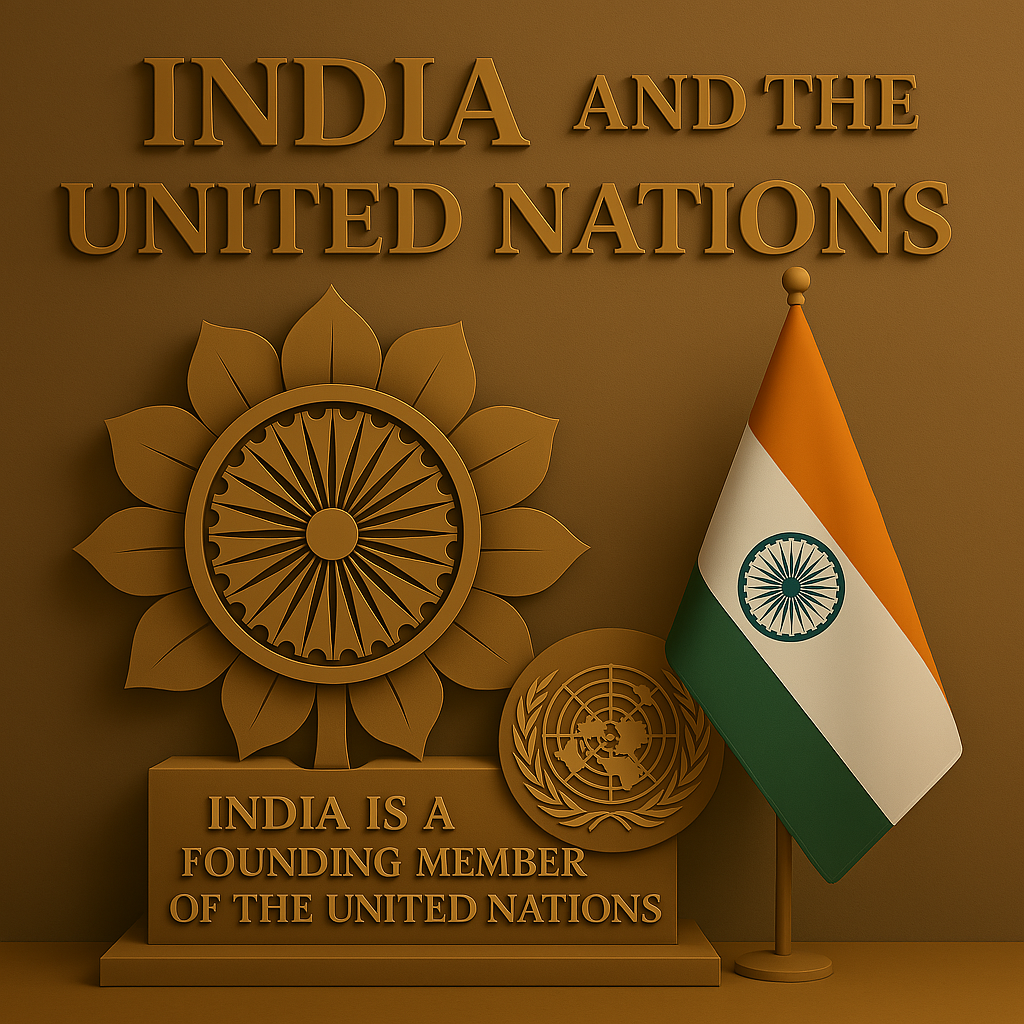
Relations between India and the United Nations have been historic , dynamic and multilateral. India a founding member of the United Nations And it has always contributed to the work of UNO in the areas of world peace , development , human rights and cooperation. Active Participation I have played it.
Key contributions and role:
( i ) Founding Members:
- In 1945 , India UN Charter He participated in the founding of the United Nations by signing the .
- India was not independent at that time , yet it got the status of a founding member.
(ii) Contribution to Peacekeeping Missions :
- India is a member of the UNO One of the largest peacekeepers contributing countries Is.
- Indian troops have served in Congo , Sudan , Lebanon , Cyprus , Haiti and other conflict zones Important role in peacekeeping I have played it.
- So far More than 2 lakh Indian soldiers Has served in United Nations missions.
(iii) Presidency of the General Assembly:
- V.K. Krishna Menon in 1953 was elected President of the General Assembly.
- India has played an influential role in the General Assembly and other councils many times.
(iv) Membership of the Security Council:
- India so far 8 times temporary member of the United Nations Security Council It has been made (last seen 2021-2022) .
- India continuously Permanent Membership is demanding and it also has the support of many countries.
- India believes that given its contribution to global politics and its population, it should Permanent members should be given the status of.
(v) Participation in United Nations Agencies:
- India is a partner in agencies like WHO, UNESCO, UNICEF, UNDP, FAO Acts actively.
- India has Sustainable Development Goals ( SDGs) has adopted and is working in areas like poverty , health , education , women empowerment.
(vi) Human rights and climate change:
- India has raised issues on climate change , environmental protection , human rights and sustainable development from the UNO platform. Responsible and balanced approach has presented.
Special Initiatives of India:
- India’s initiative of International Yoga Day (21 June) has been supported by UNO It was accepted in 2014 , and is now celebrated globally.
- India has Vaccine Maitri ( Vaccine Maitri ) Under the campaign, Corona vaccine was provided to many countries , which was appreciated at UNO and global forums.
Conclusion:
India has always India has supported the objectives of the United Nations with the spirit of ” Vasudhaiva Kutumbakam” ( the whole world is one family). India’s role on the platform of UNO Peace , Development and Justice The bilateral relations between the two countries have been based on the principles of bilateral ties and India will continue to be a responsible and positive partner in the future.
9. Conclusion
The United Nations ( UNO) was established in 1945 with the objective of promoting world peace , security , human rights and development. After the horrors of the Second World War, it became clear that if the world is to be saved from another catastrophe , an international organization is necessary which provides a common platform to all countries.
The United Nations has done commendable work in many areas over the past decades – such as peacekeeping , disaster management , poverty alleviation , education , expanding health services , environmental protection and strengthening global cooperation. However , its limitations and challenges have also been exposed in some cases , especially criticism has been made about the veto power in the Security Council.
India has always maintained its cooperative and responsible relations with the United Nations and has played an active role in global peace and development.Hence , the United Nations still remains a key player for the global community. A symbol of trust and cooperation If its functioning is made more democratic , inclusive and effective , then this institution will continue to be a great asset for humanity in the future too. ray of hope It can remain.
References
Official Portal of the United Nations – https://www.un.org
Government of India, Ministry of External Affairs – https://mea.gov.in
“United Nations and India” – Publications Division, Government of India
United Nations Yearbook (UN Yearbook)
World Politics and International Organizations – Lakshmi Narayan Agarwal
“International Relations” – Joshua S. Goldstein & Jon C. Pevehouse